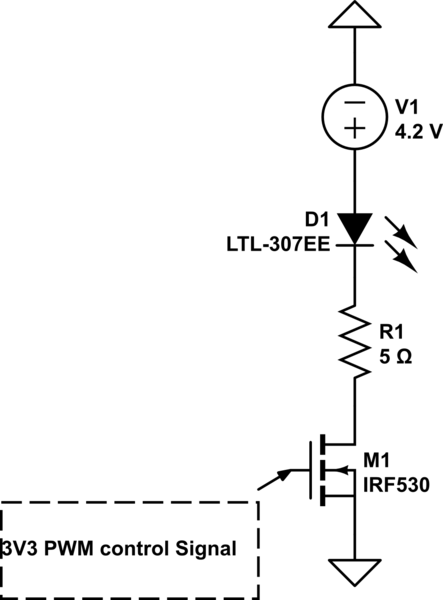
simulate this circuit – Schematic created using CircuitLab
LED: 2.05V @ 350mA 5-6 Ohm Resistor for current regulation
Hi, currently designing a circuit that controls a LED using a PWM logic level signal at 3V3. I am wanting to use a small footprint mosfet or transistor but am unsure what to use. I've looked at MOSFETS but all will operate within the ohmic region of the FET is that okay or will that eventually cause damage to the FET. Am i better to use a BJT transistor to control the switching as its a low voltage low current application but will the switching speed of a BJT be quick enough for a PWM application.

